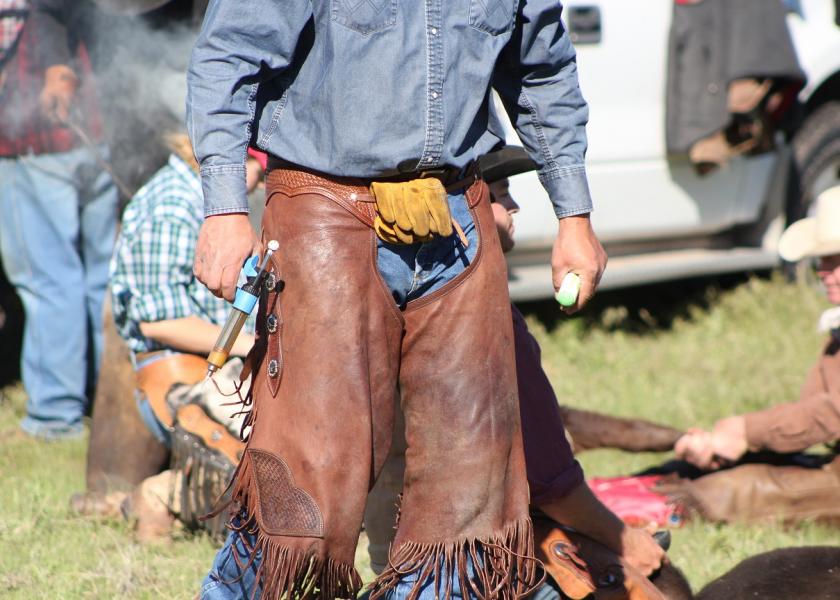Relieving Stress Around the Branding Pen

Spring calving brings the promise of working calves, and in some areas of the state, branding season. Following is the challenge of gathering enough help at the right times to ensure proper vaccination, castration, and the other complements to our herd health programs. Priorities during this event typically include people safety and minimization of cattle stress.
Research has shown that stress related to branding calves is correlated more with amount of time separated from the dam, rather than actual method used to complete working calves (i.e., calf table vs. roping methods). When working cows and calves at branding it may be best to work cows first and return them to the calves as quickly as possible. Calves will start calming down even if they are not with their own mothers, reducing bawling.
Each operation is set up differently with varying resources to work calves, and potentially cows at the same time. With technological advances around working cattle there are options to evaluate how these opportunities match with resources. This could be as simple as having a couple devices to help wrestle calves such as Nordforks or as extensive as a hydraulic calf tub, alley, and table.
A Nordfork is a device that was invented to hold a calf in combination with a roper on the heels of the animal; the NordFork is a steel loop that goes behind the ears of the calf to catch it and hold it while the animal is vaccinated and branded. The loop has a handle on one end to assist with removal. This option decreases the number of ground crew required; one person can operate two or three Nordforks simultaneously, replacing up to six people. Nordforks also make dealing with larger calves easier for the ground crew as they do not have to solely depend on two wrestlers to restrain the calf. Having skilled ropers reduces calf stress in any rope and brand setting, since frequent misses can cause excessive movement.
If the convergence of resources allows for an investment in equipment or development of a working facility designed specifically for calves, there is the possibility of decreasing the amount of labor needed at specific times for working a group of cattle. This also potentially increases flexibility of when calves can be worked and improve timeliness of vaccination and cattle movements. Those with smaller operations that have trouble getting adequate help or skill for a rope and drag branding may find a calf table to be a good alternative. The primary disadvantage of this system is the amount of capital investment if seeking to purchase materials or a portable facility.
An additional way to relieve stress in the moment of working cattle is analyzing vaccine programs regularly, being familiar with administration of each product, and how to handle those products to ensure safety and efficacy of vaccination. The primary resource here is maintaining a healthy veterinarian client patient relationship and having a constant conversation about expected results of animal health programs. Recent developments have included syringes that will hold entire bottles of vaccines that can improve vaccine handling and administration.







